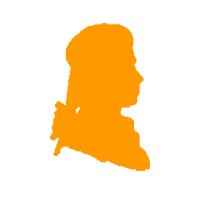The Crash at Crush was a one-day publicity stunt in the
U.S. state of Texas that took place on September 15,
1896, in which two unmanned locomotives were crashed
into each other head-on at high speed. William George
Crush, general passenger agent of the
Missouri–Kansas–Texas Railroad, conceived the idea
in order to demonstrate a staged train wreck as a
public spectacle. No admission was charged, and train
fares to the crash site – called Crush, set up as a
temporary destination for the eve...(+)
The Crash at Crush was a one-day publicity stunt in the
U.S. state of Texas that took place on September 15,
1896, in which two unmanned locomotives were crashed
into each other head-on at high speed. William George
Crush, general passenger agent of the
Missouri–Kansas–Texas Railroad, conceived the idea
in order to demonstrate a staged train wreck as a
public spectacle. No admission was charged, and train
fares to the crash site – called Crush, set up as a
temporary destination for the event – were offered at
the reduced rate of US$2 (equivalent to $61.46 in 2019)
from any location in Texas.
As a result, an estimated 40,000 people—more people
than lived in the state's second-largest city at the
time—attended the event. Unexpectedly, the impact
caused both engine boilers to explode, resulting in a
shower of flying debris that killed two people and
caused numerous injuries among the spectators.
For the event, a tent city, called Crush, was
temporarily erected on a rail line of the
Missouri-Kansas-Texas Railroad about 5 miles south of
the town of West in McLennan County. This included two
wells that were specially constructed, tents belonging
to the Ringling Brothers Circus, and a grandstand. A
second railroad line was built parallel to the existing
one for the event so that traffic on the main line
would not be disrupted.
The two 2'B locomotives used were numbered 999 (painted
bright green) and 1001 (bright red).
Both traveled throughout Texas months before the event
to promote it. At 5 p.m., the two trains were run to
opposite ends of the 6.5-mile track. They consisted of
the two locomotives and old boxcars loaded with
railroad ties. The locomotive drivers set the engines
in motion, having previously determined exactly how
much steam was given so that the trains would also meet
in the middle of the track in front of the grandstand.
As soon as this was done, the engineers jumped off.
When the two trains met, each was traveling at about 70
km/h.
What the organizers had not counted on: The collision
caused both locomotives to explode boilers. Debris from
the vehicles, some of considerable size, was hurled
several hundred meters. Three spectators were fatally
struck, and numerous were injured.
Scott Joplin, who was in the area but is not certain if
he saw the event, composed The Great Crush Collision
March, which appeared less than a month after the
event. The piece of music includes playing instructions
for the musicians on how to imitate the collision
sound.
-- https://en.wikipedia.org/wiki/Crash_at_Crush --
--
https://de.wikipedia.org/wiki/Eisenbahnunfall_von_Crush
--
A nice example of musical sound painting, film noises
and a film score as used for background in the first SW
silent films. Would still be usable today for exactly
the same purpose.
Scott Joplin (* between June 1867 and January 1868 at
Linden, Texas; † April 1, 1917 in New York City, New
York) was an American composer and classically trained
pianist. More conclusive than other composers of
ragtime, Joplin, who is considered the "perfecter of
this style", combined elements of the Romantic piano
tradition with African American folklore to create
powerful miniatures. In addition to some eighty rags,
Joplin has also written stage works. As 2017 marks the
end of one hundred years of copyright protection,
Joplin's work is now "In Public Domain".
So: Any amateur video director or any other private
person may download this music (PD arrangement) free of
charge, save it as MP3 or .ogg, use it in video
editing with his editing program or distribute the
music further. Conditions of use: Free of charge!
According to Creative Commons, Attribution, Non
Commercial, Share Alike. So: In return for the right to
use my arrangement with HQ-Sound, the software should
be called "Musescore 3.6.2" and the arranger
"FarrierPete@aol.com" in the credits - that's all. And
of course the offer is only valid for free amateur
videos, private party music or free computer games from
fans, not for commercial film, advertising, video and
software products that want to earn money in
distribution.






